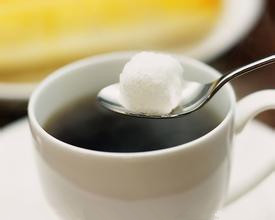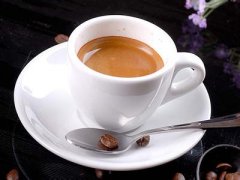Classic Coffee making skill-- mellow single Coffee

The utensils to be prepared by ◆: siphon coffee pot set, wet dishcloth, coffee cup group
◆ coffee beans: shallow roasted to deep roasted coffee beans
Dosage and grindability of ◆ coffee powder: 15g / cup (150ml), fine grinding (about 2) to rough grinding (about 4)
1. Pour a little hot water into the next bottle, warm the pot and pour out; at the same time, add the right amount of hot water to the coffee cup and set aside.
two。 Pour a cup (about 150 ml) of hot water into the lower bottle and dry the outer droplets (to avoid glass breakage). Heat it with an alcohol lamp or using a coffee gas stove.
3. Load the filter into the bottom of the upper bottle and pull the spring through the siphon to the front end to hook and secure.
4. Put the coffee beans into a bean grinder and grind them into coffee powder with the right thickness according to the type of coffee beans.
5. Put the coffee powder into the upper bottle and insert the upper bottle obliquely on the lower bottle.
6. After the water in the next bottle boils, press the upper bottle down slightly and insert it gently into the lower bottle.
7. After the hot water completely rises to the top of the bottle, stir well with bamboo slices (when stirring clockwise from outside to inside, from top to bottom, press the powder into the water, do not stir too long, so that the coffee powder can be dispersed. In the process of stewing, if the coffee powder is piled up into pieces, you can stir it again.
8. After boiling the coffee, turn off the fire, stir the coffee in the bottle again, gently apply the bottle with a wet dishcloth to make the temperature drop, so that the coffee flows back to the next bottle through the filter cloth.
9. After the coffee flows back to the next bottle, grab the armrest of the lower bottle and push it obliquely up the bottle to get it out of the lower bottle.
10. Take off the top bottle and pour the coffee into the warm cup. The purpose of stirring after cooking is to let the coffee flow down quickly, and the coffee grounds can show a perfect hill shape, but in fact, there is no absolute relationship between the shape of the coffee grounds and the quality of the brewed coffee. Glass is very fragile at high temperature, so you should avoid knocking and contact with cold water. At the same time, do not burn empty if there is no water or coffee in the next bottle, so as not to break.
Important Notice :
前街咖啡 FrontStreet Coffee has moved to new addredd:
FrontStreet Coffee Address: 315,Donghua East Road,GuangZhou
Tel:020 38364473
- Prev

Classic Coffee making skill-- Hot latte
◆ content: 1 cup ◆ utensils: Italian coffee machine, coffee cup group ◆ material: Italian espresso 45ml, milk 180ml, sugar packet 1 packet ◆ practice: 1. First brew espresso with an espresso machine and steam the milk into hot milk and milk bubbles. two。 Warm the coffee cup with hot water, pour out the water, add espresso, slowly pour in hot milk, and finally
- Next

Coffee Common sense Comprehensive Coffee preparation and points for attention
Except for a few kinds of coffee which are only suitable for individual preparation, most of the coffee can be comprehensively blended, and after blending, the flavor is more varied, which can meet the needs of more people. However, it should be noted that when different kinds of coffee are blended with each other, it is necessary to know the respective characteristics of each kind of coffee in order to select the appropriate mix.
Related
- Beginners will see the "Coffee pull flower" guide!
- What is the difference between ice blog purified milk and ordinary milk coffee?
- Why is the Philippines the largest producer of crops in Liberia?
- For coffee extraction, should the fine powder be retained?
- How does extracted espresso fill pressed powder? How much strength does it take to press the powder?
- How to make jasmine cold extract coffee? Is the jasmine + latte good?
- Will this little toy really make the coffee taste better? How does Lily Drip affect coffee extraction?
- Will the action of slapping the filter cup also affect coffee extraction?
- What's the difference between powder-to-water ratio and powder-to-liquid ratio?
- What is the Ethiopian local species? What does it have to do with Heirloom native species?

